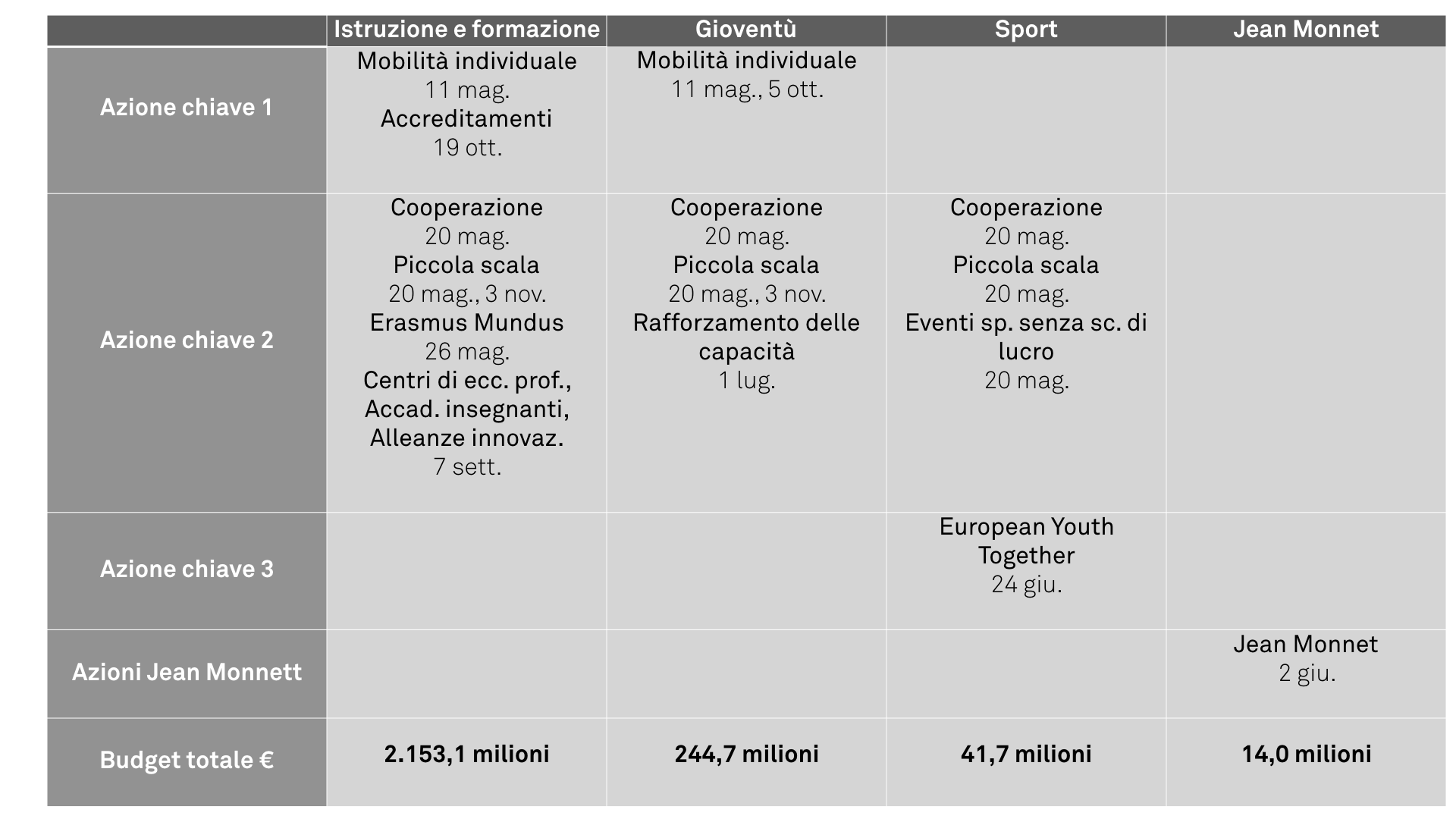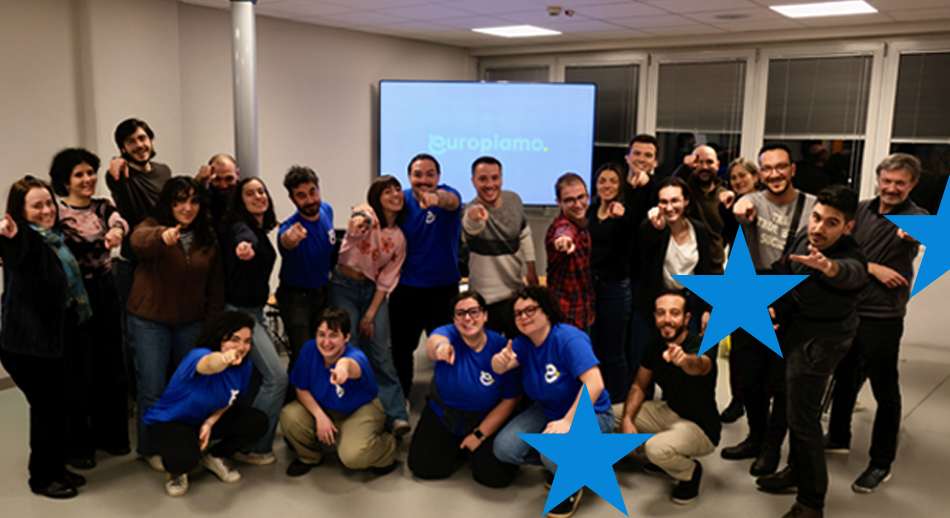The new programming is approaching in quick steps: call schedules and the Erasmus+ program guide have just been released.
Erasmus+ a new piece in new programming
We recently presented the Horizon Europe webinar and the first official work plan under the program. But it is already time for a new update.
In fact, some of the most important documents related to another of the European Union’s “flagship programs” have just been published: Erasmus+, the flagship program in education, training, sports and youth mobility (and more).
Again, this is a “prelaunch,” contingent on the approval (expected very soon, however) of the regulations that form its legal basis.
As always, you can keep up to date on this and other major news about upcoming calls for proposals through CSVnet’s InfoBandi platform, which has always been associated with our Guide.
Erasmus+: a great history and a great future
Let’s find out the main features together by going over the official announcement a few days ago. The program is one of the most successful initiatives of the European Union, which has been accompanying the mobility and cooperation of young people and people of all ages active in learning for decades now.
Perhaps not everyone knows that:
- Is more than 30 years old: it was first launched back in 1987
- Is considered “the third most positive achievement of the EU,” after free movement and peace
- involved more than 10 million people from 33 countries and will affect as many in the next seven years
- is named after one of the greatest humanists of the European Renaissance, but it also originated as an acronym: EuRopean Community Action Scheme for the Mobility of University Students
By virtue of this outstanding history and its contribution to the European construction project, it will have a total funding of 28, 4 billion euros: almost double the amount of the previous programming period.
It is not only “school”: it is also “discovering by traveling,” sports, European values and democratic participation of young people. It is the main pillar of one of the EU’s major priorities for the coming years, the realization of the European Education Area, and contributes to other major EU policy axes: inclusion(the European Pillar of Social Rights), collaboration with third countries, the EU Youth Strategy, Digital Transformation, and the European “Green Deal.”
Erasmus+: what we already knew
As we already know for all programs, the proposed Erasmus+ regulation, the related European Parliament resolution, all information on theprocess of the procedure and updates on the development of the related debate are available. These are documents that already give a basically final picture of the nature of the program (political agreement was reached in December).
In addition, Erasmus+’s own multiple information channels(website, National Agencies, EACEA, etc.) regularly provide all the updates and tools needed to participate in the program.
Erasmus+: what we know now
Now, with the latest Erasmus+ documents officially released, we know even more: that is, practically everything. We have in particular:
- The annual work program of Erasmus+, which defines the availability of funds for 2021 with details for each individual line and thematic area, the policy and strategic framework, the general objectives and actions of the program, and the specific activities for each of the Erasmus+ actions, with its allocated budget and management arrangements. A similar and separate document is also provided regarding pilot projects and preparatory actions in the related areas of education, youth, sports and culture;
- The Erasmus+ program guide. , aimed at clarifying for potential beneficiaries (organizations and individuals) all the useful aspects of participating in the program and receiving a grant (further detailed in the specific calls for proposals). The guide is divided into three distinct parts: a general one with information on the objectives, priorities and main features of the Program, participating countries, implementing structures and total available budget; a specific one with information on each individual type of action and project supported by the Program; and one with detailed information on procedures and provisions applicable to grant application, project selection and grant initiation. It also provides four annexes with additional information about individual actions, guidance on dissemination aspects, terminology, references and contacts. Proposal submission templates have also already been published;
- The call (call for proposals) for 2021 , with all types of actions, deadlines and related financial allocations planned for this year. We can summarize them as follows:
Erasmus+: the main new features
The main new features of the new Erasmus+ program are explained in a fact sheet. We can summarize them as follows:
- Overseas mobility initiatives:
1) Integration of a “blended approach” in higher education (online learning + group work + short periods abroad);
2) Greater focus on vocational training (doubled allocation for “ErasmusPro”);
3) Integration of the “DiscoverEU” initiative (for discovery – by train – of European cultures, among other actions for youth participation);
- Cooperative initiatives:
1) openness to a range of parternships at once broader (small-scale partnerships with simplified procedures), deeper and more innovative (large-scale pilot projects);
2) greater development of old and new forms of “systemic” partnerships(European universities, Centers of Professional Excellence, Erasmus Teacher Academies, opening of theJean Monnet Initiative to schools and institutes, strategic role of sports);
3) greater openness to the non-EU world in all areas (e.g., Erasmus Mundus, European Youth Together);
- Confirmation of the extensive support provided to beneficiaries:
1) through the official channels of the institutions in charge of program management(Erasmus+ website, platform of funded projects, National Agencies, EACEA Agency);
2) through specific platforms dedicated to the main categories of beneficiaries(eTwinning and School Education Gateway for those working in education, EPALE for adult education professionals, European Youth Portal and Youthpass for young people and youth organizations, OLS for online language support, even an App dedicated to the Erasmus program).
Best wishes to all for the launch of Erasmus+.
While waiting for the final formal touches, we really already have everything we need to plan our activity on Erasmus+ throughout the year.
Along with this good news, we send to all potential beneficiaries (and to all of us) the wish that at last, later this year, the mobility and exchange activities that over more than three decades have contributed to the greatness, beauty and success of the Erasmus program can resume.





